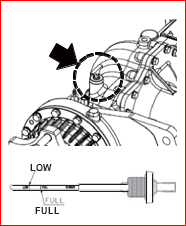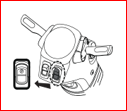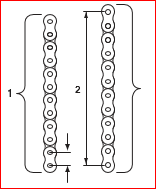2019 Clark S35D IC Pneumatic 50-250 hours PM
The 2019 Clark S35D IC Pneumatic 50-250 hours preventive maintenance form checks the truck visually and inspects the components. The form has the complete instructions that you can easily follow plus photos for easier understanding.
2019 Clark S35D IC Pneumatic 50-250 hours PM
The 2019 Clark S35D IC Pneumatic 50-250 hours preventive maintenance form checks the truck visually and inspects the components. The form has the complete instructions that you can easily follow plus photos for easier understanding.
Check truck visually and inspect components.
Test drive truck/check functional performance.
Overhead Guard
Load Handling Components
Inspect the:
Carefully check the lift chains for
Air clean truck and radiator
Check torque on critical fasteners.
Critical items include:
Drain and replace engine oil.
It is recommended to:
Engine oil at operating temperature is hot and can cause burns. Beware of splashing oil.
Replace engine oil filter.
Changing the Engine Oil and Oil Filter
Inspect / adjust fan belts.
Inspect the
Drain / flush radiator coolant.
If the level is low, add a 50/50 mixture of specified coolant and water to the correct fill level. If you have to add coolant more than once a month or if you have to add more than one litre at a time, check the coolant system for leaks.
Check engine ignition and timing.
You will start the engine to complete the functional tests, so be sure that:
Engine tune-up.
Be sure that the travel area is clear in front of the truck.
Check battery.
Inspect the battery for
Check transmission fluid level.
Before checking
Change drive axle fluid. (cooling system not equipped) - Cooling system equipped : 2,000 hours
Check brake condition and wear.
Parking Brake
Check drive axle mounting and fasteners.
Critical items include:
Lubricate steer axle linkage.
Lubrication and inspection of truck chassis components, including :
Inspect the steering cylinder piston
Check / lubricate steer axle wheel bearings
Horn Button
Change / replace hydraulic sump oil filter and breather
Sump Tank Breather Maintenance and Inspection
Change / replace hydraulic sump fluid and oil filter.
Lubricate tilt cylinder rod ends.
Upright and Tilt Cylinder Lubrication
Lift Chains
Check lift chain adjustment and wear.
During the inspection, check for the following conditions:
Check / lubricate lift chains.
Lift Chain Wear and Replacement Criteria:
Source: Clark



